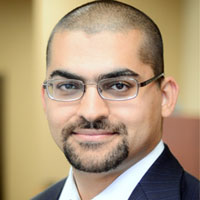Hair Transplant - Solution to Hair Loss
The genetic factors which lead to hair loss do not spare even royalty or so it seems. The best care, food and actual royal treatment have not postponed balding symptoms for both William and Harry, princes of the British royal family.
Experts like Dr. Asim Shahmalak and others have reported about the male pattern baldness problem which is running in the genes of the royal family. Prince Harry’s father Prince Charles and his brother Prince William also have the same problem. Also the princes’ grandfather Prince Philip and their uncles, Princes Andrew and Edward suffer from hair loss.
The genetic factor in Prince Harry’s case is augmented by the fact that his mother Princess Diana’s father Earl Spencer was also bald.
The several treatment options available today help men overcome this problem. Advancement in the science of medicine and technological developments open several avenues to treat male pattern baldness.
Although many men do not fret and fume over this problem, taking it in their stride, there are many who really bother especially those who are constantly in the public eye, those who are celebrities and those who are affected at a very young age. Hair restoration treatments help such young men regain confidence and self-esteem.
Young men who are afflicted with baldness can start combating the condition in its early stages itself. The drug Propecia is highly effective in arresting or significantly reducing hair loss. Although it may not help regrow hair it stops further loss. Hair loss which starts at top of head may not continue to the hair line in front of head.
Minoxidil also serves as a clinically proven hair loss medication. Both the medicines are effective in the early stages.
In later stages hair transplant serves as the best option as is proven by several celebrities who have successfully regained hair and their status. Such celebrity endorsements also help other men to seek professional help without being embarrassed about it.
Dr. Shahmalak’s Crown Clinic like many other specialty clinics transplants hair from the sides and back of head which are genetically immune to hair loss to the bald areas. Permanent hair-bearing skin from the donor area is subjected to stereoscope microscopic dissection.
The tissue is dissected into follicular unit grafts with 1 to 4 hairs or as multi-follicular unit grafts with 3-6 hair. These microscopic grafts are then transplanted to the bald areas carefully so that any healthy follicles in the area are not damaged and also to maintain the same angle as the other hair.
Hair transplant benefits men with male pattern baldness; women with female pattern hair loss; men and women who want to change the shape of their hairline and also people with areas of scarring or skin diseases.
Hairfear
Frequently asked questions about hair transplant procedures
How much does a hair transplant cost?
Hair transplants can vary in price based off of the area in the world that you are interested in getting a hair transplant as well as the size of the area where you may need a hair transplant. Experienced doctors in the United States will often charge some of the highest prices for a hair transplant worldwide and this is why so many travelers make the move to other parts the world like Turkey, India, Thailand, Mexico...etc for their hair transplants.
Will a hair transplant hurt?
Although hair transplants may look like a particularly
unpleasant or painful experience is actually very little discomfort involved
with the surgery itself. Hair transplants are always done under an anesthetic so there's absolutely zero pain during the treatment itself. Many people actually relate the process as being very similar to going to the dentist for filling or root canal. Mild pain can persist over the course of postop treatment but he generally just resumes for a few days.
Who can deliver the best surgery?
It's usually best to consider working with surgeons who have and IAHRS certification or international alliance of hair restoration surgeons recognition. IAHRS can often deliver recommendations for the best surgeons in each particular area.
Is this scarring noticeable?
Any type of hair transplant will require the use of incisions throughout the scalp. There can also sometimes be a small scar from the donor area towards the back of the scalp. Asking to look at photos of the surgeon's previous work will help you to see roughly how bad the scarring could be. In most cases an experienced professional can limit the look of scarring and noticeable marks from the surgery.
How long does it take for the hair to grow?
In most cases hair growth will start within eight months and you can start to see a full effect from the hair transplant after a full year. The initial signs of growth can usually start between 3 to 4 months after the surgery.
Are the results permanent?
The hair follicles that are transplanted are generally the ones which are genetically resistant against the symptoms of baldness. As long as you receive hair loss treatment later in your life after the symptoms of balding have started to subside, you can have a better chance at permanent results.
While everyone know you've had surgery?
If you want to limit the chance that people may find out about your surgery it's important to give at least three weeks of healing as the surgical area will be affected and red just after surgery. After around a month of healing it can look far less noticeable. You could consider wearing a hat while time passes or opting for some extra time off if possible.
How long should I rest after surgery?
It's recommended to rest for at least a few days after surgery so that your body can recover. Trenton to over exert yourself and limit sexual activity, running in the gym for around 10 days after surgery.
Is it possible to lose more hair as a result of surgery?
There is always a chance of shock loss which happens when the hair is weak and miniaturizing after the surgery. As long as the surgeon is choosing the correct hair follicles and performing the surgery well it's possible to minimize the chance of this happening however.
Will I need another hair transplant?
The need for another transplant really depends on the individual. With a solid foundation surgery and working to potentially bolster results with drug therapy, you can improve the stability of the hair that was transplanted as well as prevent further loss. Getting a hair transplant early
on in your 20s or early on in life could lead to needing long-term transplants as hair loss can be progressive.







